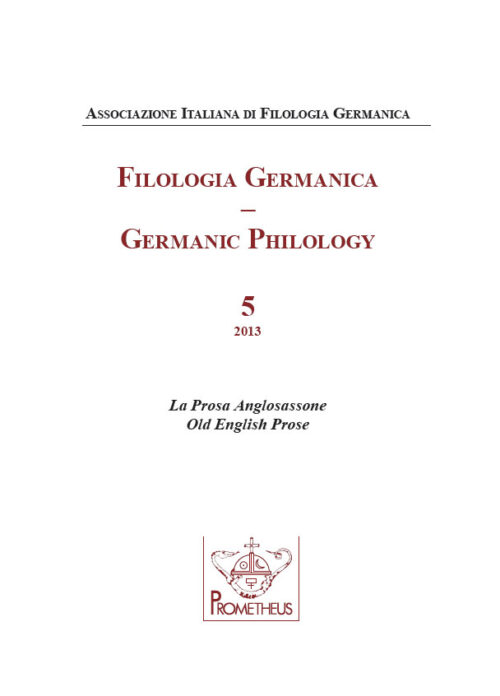Ne opige nan man to ðissere leasunge: Un controverso caso di intercessione mariana al momento del giudizio
DOI:
https://doi.org/10.14672/fg.v5i.2595Abstract
This paper discusses the possible presence of pre-purgatorial doctrines in two Old English anonymous homilies which contain the same Judgement scene: the Virgin, Saint Michael, and Saint Peter gain the redemption of a crowd of sinners just before the closing of Hell. In both homilies it is not explained who these sinners are, and why they are saved. They constitute a third crowd of souls, separated from the pious and the evil ones, and this seems to be the reason for their salvation. Are they penitent souls? Ælfric in his sermon In Natale sanctarum Virginum (CH II, 39) regarded the belief of a post-Judgement redemption of damned souls as heretical: the main goal of the Abbot was to condemn the post-Judgement salvation, not to discuss the intercession itself, or the identity of the souls involved. Following Ælfric’s warning, the scene disappeared from two late homilies which contain the same Doomsday episode, a sermon in CCCC 302 and the homily Assmann XIV. In both of these texts the Judgement follows the path ‘Salvation of the pious – Damnation of the sinners – Closing of Hell – Vision of God’, a pattern that erases the third crowd of souls. In spite of obvious differences in the eschatological description and, especially, in the supposedly interceding role played by the Virgin Mary, these texts could hardly be interpreted as the earliest Old English witnesses to the emergence of a third realm of the afterlife.
Pubblicato
Fascicolo
Sezione
Licenza

Questo lavoro è fornito con la licenza Creative Commons Attribuzione - Condividi allo stesso modo 4.0.
CC-BY-SA



